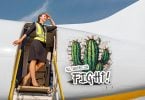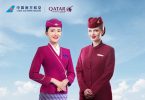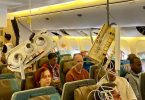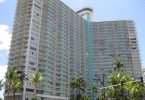BANGKOK, Thailand – Thai Airways International Public Company Limited (THAI) announced that its first 787-8 Dreamliner aircraft departed from Boeing’s Everett Delivery Center in Seattle, Washington, USA on a non-stop, 15-hour flight to Suvarnabhumi Airport, Thailand.
ACM Siwakiat Jayema, Acting President of Thai Airways International said, “As the national airline, the addition of the 787 to our fleet is a major milestone for THAI and Thailand. Boeing and AerCap have provided an airplane that is perfect for THAI and our passengers.” The 787-8 is the first of eight Dreamliners that THAI will lease from AerCap (six 787-8 set for delivery between 2014-2015, and two 787-9 for delivery in 2017).
“As the largest customer of the 787 program in the world, we are proud to celebrate this important delivery to THAI,” said Aengus Kelly, CEO of
AerCap. “This airplane is a perfect complement to THAI’s fleet and its
excellent onboard service.”
THAI’s 787 Dreamliner is configured with 24 lie-flat seats in Royal Silk
Class and 240 seats in Economy Class. The 787-8 is a mid-size aircraft that can fly longer distances and offer great fuel efficiency, complete with the interior environment that has been designed to make passenger travel comfortable and convenient.
“The 787 provides THAI the operational advantages to compete in this
challenging marketplace for years to come,” said Dinesh Keskar, senior vice president, Asia Pacific and India Sales, Boeing Commercial Airplanes. “THAI will benefit from flying the most fuel-efficient airplane in its class and its passengers will enjoy an unrivaled flying experience that they’ve come to know from Thai Airways International.”
THAI’s B787-8 aircraft is equipped with the next-generation Rolls-Royce
Trent 1000-AE engines. The culmination of advanced aerodynamics, and
lightweight structures contribute to 20 per cent reduction in fuel
consumption and CO2 emissions, as well as less “roar” around airport
boundaries and airport communities.






















